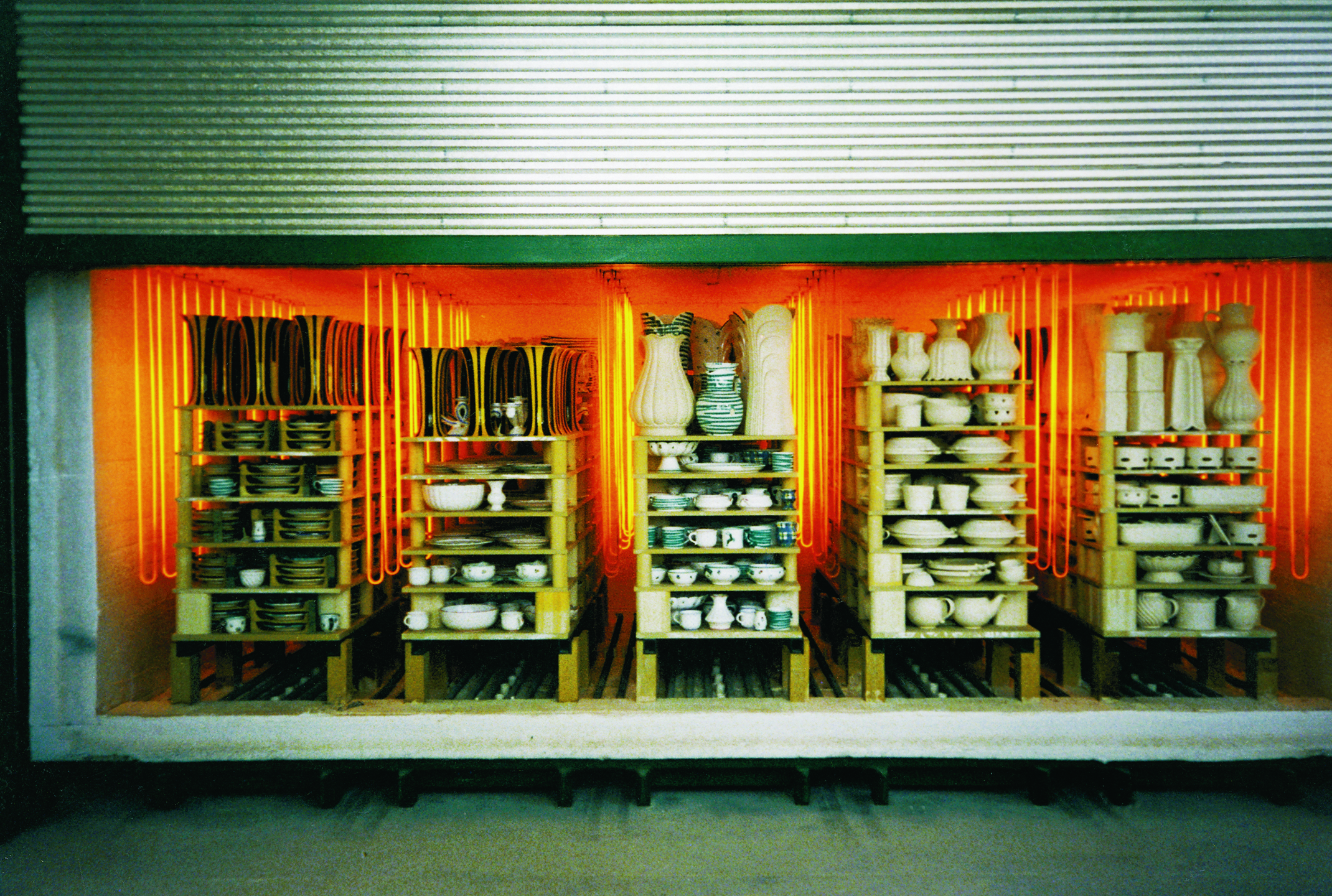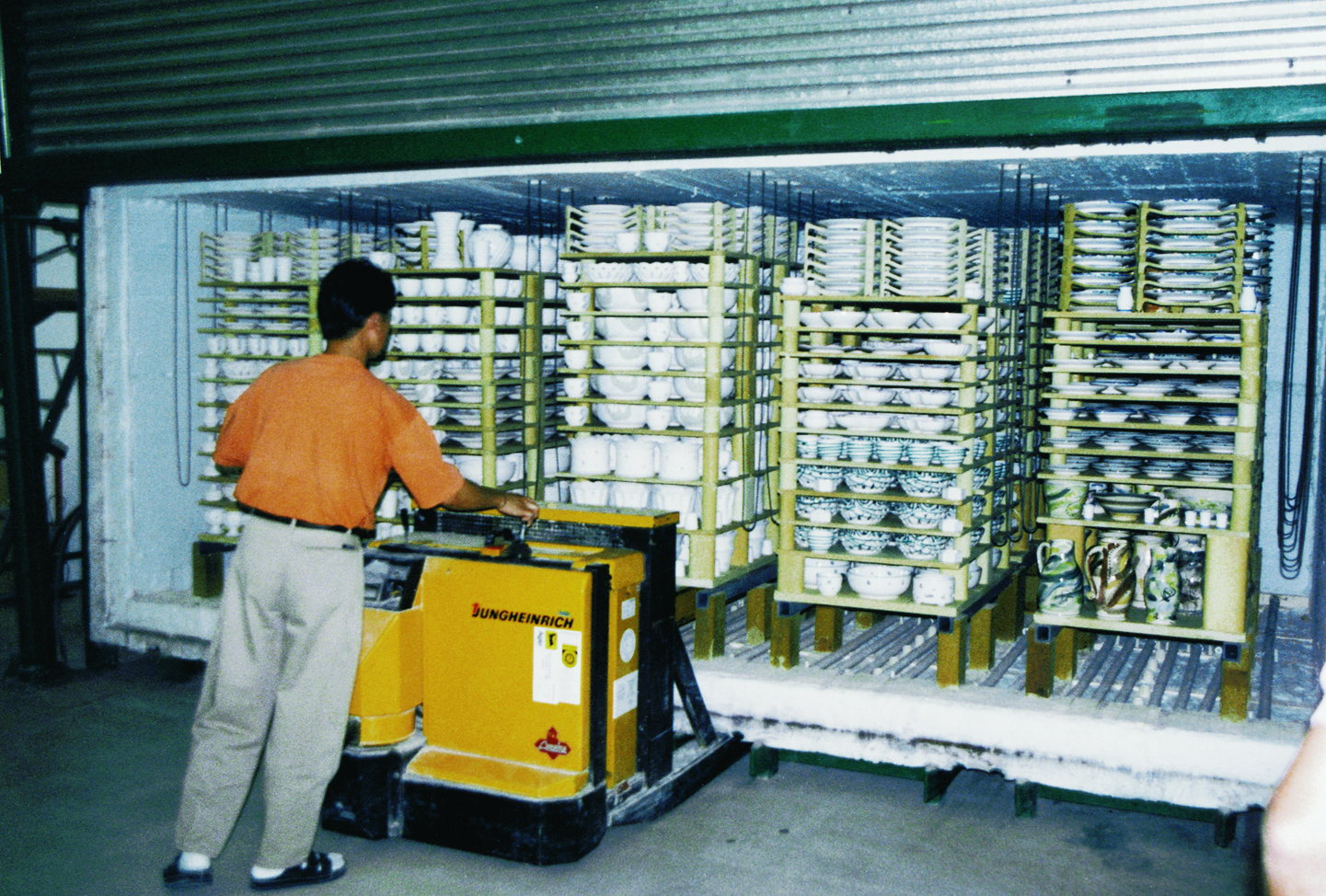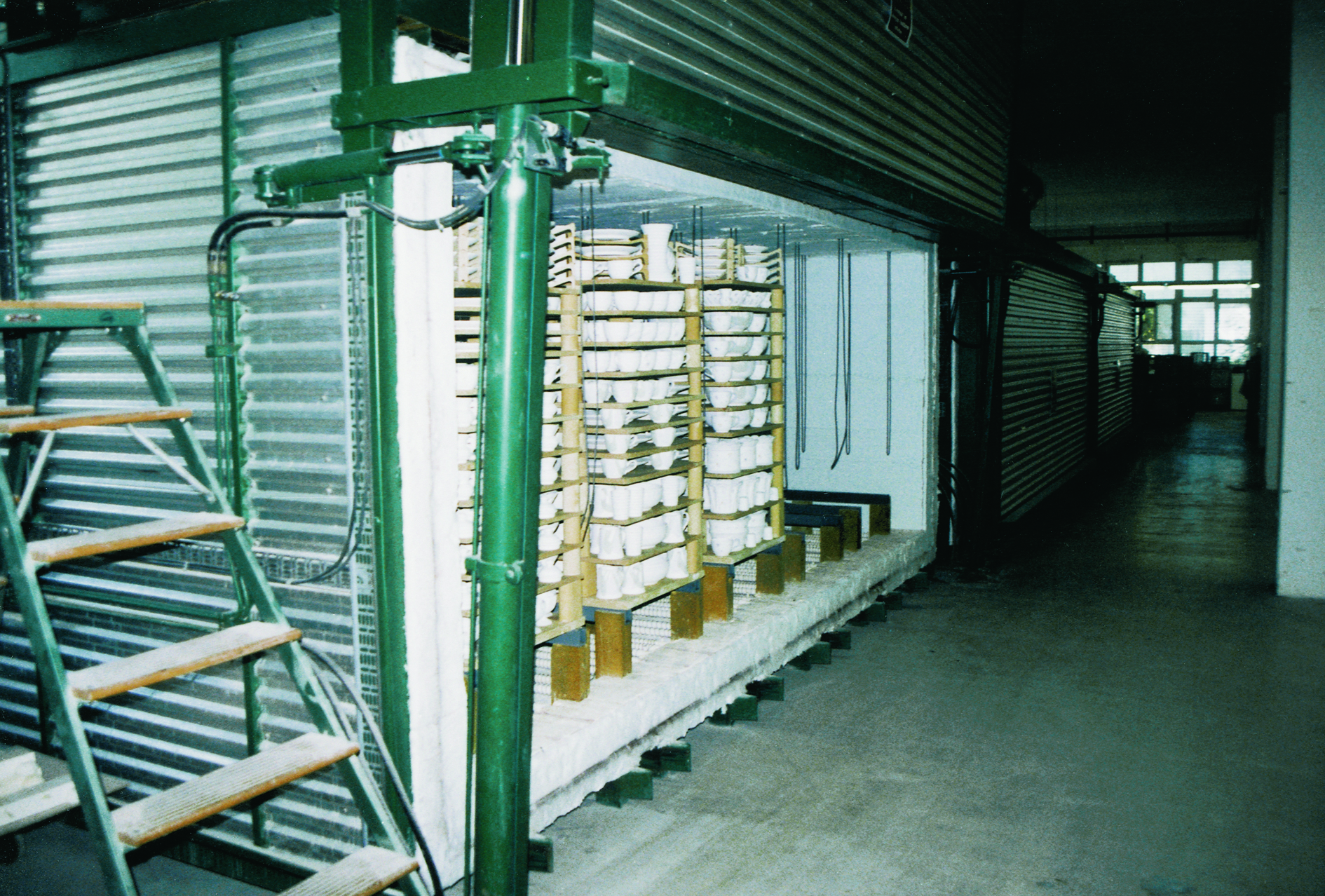 One of three 450 kW Kanthal® Super heated kilns at Gmundener Keramik in Austria.
One of three 450 kW Kanthal® Super heated kilns at Gmundener Keramik in Austria.
THE CHALLENGE
Gmundener has three electric front-loaded, fiber insulated kilns, designed and built by the furnace builder Prins Ovenbau BV, Holland, for decorating porcelain at 1015°C (1860°F) in air atmosphere.
Usable chamber size is about 10 m3 (353 ft3). One firing cycle takes about 14 hours. The porcelain products are stacked in several layers on ceramic stands, each 650 mm (25.6 in) wide.
Gmundener wanted to achieve a better result for their products in terms of colors and quality. This was achievable through a higher and more even temperature in the furnace. Another factor that was important both for working environment and the result of the production, was to minimize the level of combustion gases from the gas heated kilns.
 Loading of the kilns. The yield for decoration firing is normally 100%.
Loading of the kilns. The yield for decoration firing is normally 100%.
THE SOLUTION
Total installed power in each kiln is 450 kW generated by six rows of eight Kanthal® Super molybdenum disilicide (MoSi2) heating elements of the 1700 6/12 type. The heating zone length, Le, is 1250 mm (49.2 in) and the terminal length, Lu, is 315 mm (12.4 in). Each element is rated at 9.375 kW.
The eight elements in each row are connected in series to line voltage without transformers and regulated by phase angle thyristors. The porcelain products are biscuit fi red in direct heated gas kilns.
The heat transferred from the heating zones of the elements to the furnace load is relatively minor. The majority of the heat transfer onto the products is radiant energy reflected from the furnace interior – walls, roof, floor, kiln furniture and also the products themselves. When firing ceramic products an even temperature gradient is very important and the refl ected radiation contributes to this evenness, which cannot be achieved in a gas heated kiln.
THE RESULT
With Kanthal® Super MoSi2 heating elements on both sides of the product stands, the required evenness of temperature throughout the kiln is achieved. The radiation energy reflected is of such magnitude that the additional metallic floor elements once installed, are not needed.
The experience from the Gmundener installation is that the decorating enamel becomes brighter when fired in an electric kiln with an air atmosphere, compared to direct gas heated kilns. Some metal oxides in the enamel such as copper oxide, cannot be fired in gas heated kilns as the correct color balance cannot be obtained.
Another advantage of electric kilns is the absence of the combustion gases, which are produced in gas heated kilns. Electric kilns are, therefore, environmentally friendly. The yield of the decorating firing is normally 100% when the enamel is correctly applied.
A heating system, based on Kanthal® Super heating elements, has due to high and even quality a long lifetime. In addition, their high density makes them resistant to chemical attacks. The heating system for kilns, when assessed in terms of cycle time, energy cost and total economy can equal the performance of direct gas heated kilns.
 Each of the three fiber insulated kilns has a volume of 10 m3 (353 ft3) and 48 Kanthal® Super elements in six rows. The distribution of the elements in the kilns contributes towards achieving an even temperature.
Each of the three fiber insulated kilns has a volume of 10 m3 (353 ft3) and 48 Kanthal® Super elements in six rows. The distribution of the elements in the kilns contributes towards achieving an even temperature.